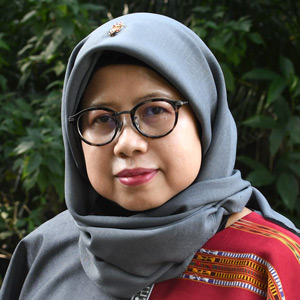Member of the Ketak Craftswoman Group uses basket-weaving skills after the workshop in Lombok
Led by an ICRAF Research Team, Kanoppi also supported smallholder farmers to employ agroforestry practices, including combining fruit trees and medicinal plants such as ginger and turmeric.
Beekeeping is another promising avenue for high-value returns, which makes use of the populations of native, stingless Trigona bees (Trigona sp.), and offers an obvious incentive for the maintenance and expansion of local biodiversity.
To that end, “Kanoppi has facilitated the development of the Trigona Learning Centre, where would-be beekeepers can learn bee keeping techniques, and the tricks of the trade and business management,” said Muktasam Abdurrahman from the University of Mataram, who collaborated with Syafrudin Syafii, the field coordinator for the Kanoppi Policy Team.
“There are three products from trigona bee cultivation: honey; propolis and pollen,” said Juraidin, the head of the Trigona Learning Centre, as well as the forest community group Batu Padewa.
“These main products are the basis for working plans in our cooperative and will be the main business activity under our social forestry program. We will organize the younger generation graduated from high school and university to manage the propolis business.”

Juraidin, the head of the Trigona Learning Centre, demonstrates beekeeping techniques in Pelat Village

Forest honey produced by Apis dorsata bees in the forest area in Sumbawa



















